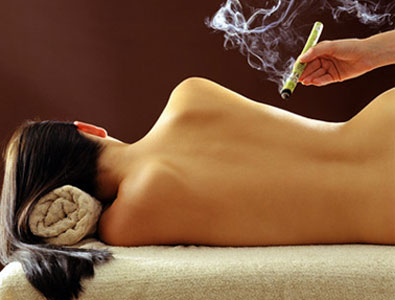Moxibustion

Moxibustion is a traditional Chinese medicine technique that involves the burning of mugwort, a small, spongy herb, to facilitate healing. Moxibustion has been used throughout Asia for thousands of years; in fact, the actual Chinese character for acupuncture, translated literally, means "acupuncture-moxibustion." The purpose of moxibustion, as with most forms of traditional Chinese medicine, is to strengthen the blood, stimulate the flow of qi, and maintain general health.
In traditional Chinese medicine, moxibustion is used on people who have a cold or stagnant condition. The burning of moxa is believed to expel cold and warm the meridians, which leads to smoother flow of blood and qi. In Western medicine, moxibustion has successfully been used to turn breech babies into a normal head-down position prior to childbirth. A landmark study published in the Journal of the American Medical Association in 1998 found that up to 75% of women suffering from breech presentations before childbirth had fetuses that rotated to the normal position after receiving moxibustion at an acupuncture point on the Bladder meridian. Other studies have shown that moxibustion increases the movement of the fetus in pregnant women, and may reduce the symptoms of menstrual cramps when used in conjunction with traditional acupuncture.
Mugwort, also known as artemesia vulgaris or ai ye in Chinese, has a long history of use in folk medicine. Research has shown that it acts as an emmenagogue that is, an agent that increases blood circulation to the pelvic area and uterus and stimulates menstruation. This could explain its use in treating breech births and menstrual cramps.



